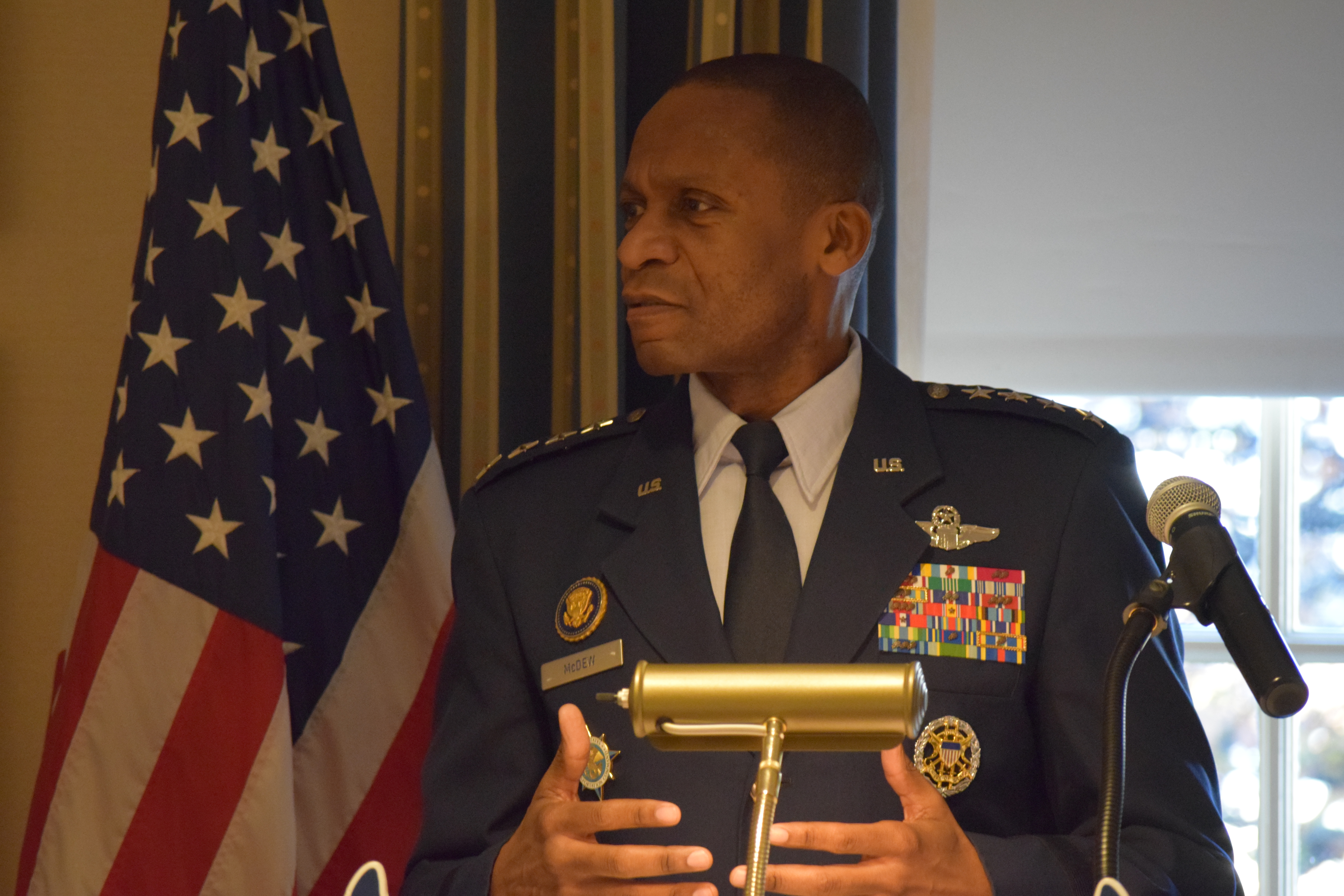
US Transportation Command boss USAF Gen. Darren McDew speaks at an AFA-sponsored, Air Force event in Washington, D.C., on Nov. 15, 2017. Staff photo by McKinnon Pearse.
The US military’s total lift capability is not big enough for all the demands it faces, which prompts US Transportation Command to adjust its priorities, such as assisting US citizens recovering from hurricanes before deploying cargo to war.
TRANSCOM chief USAF Gen. Darren McDew, speaking at an AFA-sponsored, Air Force event in Washington, D.C., said the delay in the command’s ability to send cargo downrange is down to a matter of days.
Last month, Defense Secretary Jim Mattis told lawmakers that US units deploying to Afghanistan are facing a delay because US lift capability was needed to help the relief effort in areas such as Puerto Rico and the US Virgin Islands following hurricanes.
Air Mobility Command officials told Air Force Magazine in late October that equipment shipments to Afghanistan and other locations were delayed as much as 15 days because airlift assets were in high demand for storm relief operations.
Though the delay is now much shorter, McDew said it’s still a “big deal” for those who are expecting to receive the shipments.
TRANSCOM is a global force, and has to regularly shift around its assets o try to meet the demand signal to the point where even if the command had 1,000 tankers and 1,000 C-17s it might still not be enough, McDew said.
The command is classified inside the military as a “functional” unified command, as opposed to a geographic command such as US Pacific Command. McDew said he wants to classify it as a global combatant command because geographic commanders get to tout how many countries are inside their areas of operations and for him, his AOR covers 196 countries.